Little Willy Starts and Loses
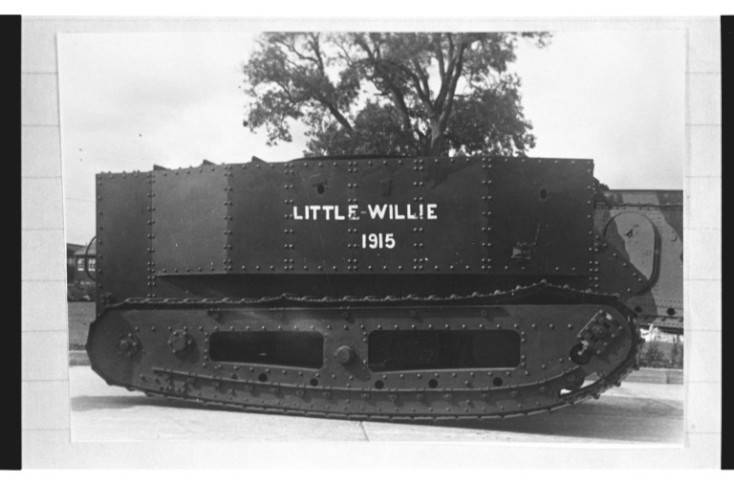
Little Willy in Bovington
Tank panopticon. Today we again visit our tank panopticon, and we will start almost from the very beginning. Rather, from what has been preserved from this beginning in metal. And it will be the British tank "Little Willy", with which all the other tanks began.
And it happened that when the war was raging all over Europe, namely in August 1915, a completely peaceful American ship arrived in Liverpool, which brought, in general, the most peaceful cargo: four American caterpillar tractors, and to them also a full range of spare parts and everything else. Of course, they could be sent to the army to carry heavy guns. But fate wished that they would not go to the front. When Colonel Crompton was informed of their arrival on August 3, he immediately ordered them to be transported to Barton-on-Trent, where the test site of the 20th Royal Naval Air Force squadron was located. Crompton did not arrive there immediately, because he was late at home with the preparation of drawings for the ... Admiralty Committee for Land Ships. Yes, yes, such a committee was created in England at that time, and he was committed to trying to create a machine that could fight the enemy in a completely new way.
The Committee on "land ships" by this time had already abandoned the wheeled vehicles that were first offered to him, and decided that the "ships" should be tracked. Some of the committee members spoke in favor of long articulated cars, but neither Crompton nor his assistant Lieutenant Walter Wilson approved of this idea, as they feared for the durability of the connection of the twin car. Of course, on paper everything looked great: they say, one half of the land ship gets stuck in the funnel from the projectile, and the other then pulls it. But when they began to test such a connection, it turned out that it was unreliable and could not be used!
Therefore, it was decided to use the chassis of new tractors, which did not have joints in the chassis in principle. Albert Stern, Committee Secretary, from his Pell Mellstrich headquarters in London, immediately after that contacted William Fritton, an engineer from William Foster and Co., over the phone, and they decided that if there was nothing wrong with the joint come out, make a "land ship" from one section.
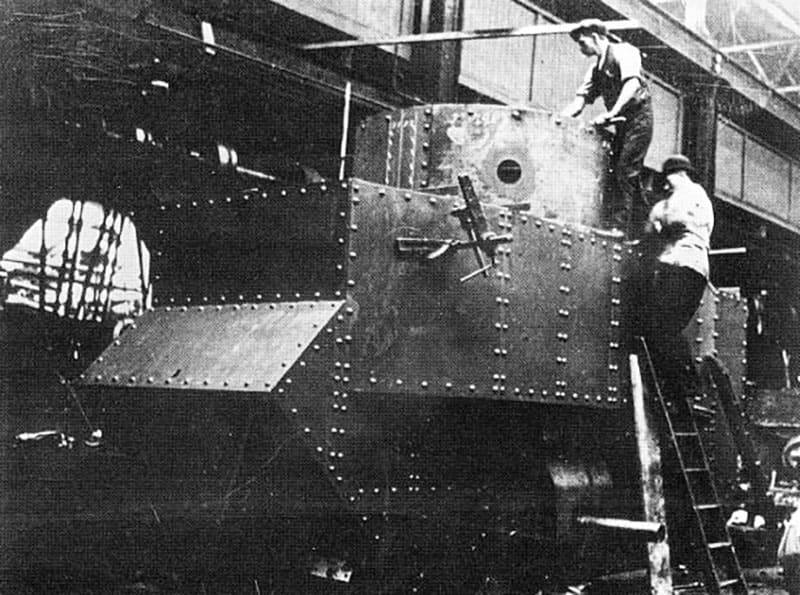
Mounted tower layout!
In the meantime, all the tractors went to Lincoln, to the Tritton company, and then, on August 11, everyone else gathered there. Tritton and Walter, the quality of American cars seemed doubtful. For example, to hook track tracks with leading sprockets it was necessary with a sledgehammer! In addition, although tractors were made to order and Crompton in it indicated that their bow should be raised, this was not done. Therefore, the caterpillar tracks of the machines sent along the entire length of them landed perfectly like the tracks of modern excavators. A lot of bad words were said about the Americans, but work on the “ships” was nevertheless begun.
September 8, 1915 the first car was ready, and it was run in the yard of the plant. It turned out that she was completely uncontrollable, so they immediately began to redo it. By September 14, a new version was ready. On it, the chassis was made raised. On September 19, committee members Eustace Tennyson d'Aincourt, Ernest Swinton, Walter Wilson came to watch her. Then the car was covered with tarpaulin - and in this form the first in stories humanity, a real tank was sent to Cross-Cliff Field, Krossskliffskoe field, where they began to test. It turned out that the trucks often slide off the steering wheels, but, nevertheless, on September 21, the committee in London sent its famous telegram from Tritton: "The ballad died at the test site yesterday morning." That is, the tank was "born", although no one has called it a tank yet.
Tritton suggested making tracks stamped. Strength was higher and technology simpler, although the foundations of the truck were still cast. It would seem so so complicated? But after all, all this had to be fastened with bolts, the mounting holes were marked and drilled under them, and the tracks themselves were connected so that the caterpillar track did not break up later! But everything was done, and on December 3, 1915, new trucks were put on the prototype of the machine. They tested it right in the courtyard of the Foster factory, and everyone liked this new car right away. Previously, the caterpillar contour was opened, but now it was closed with a metal sheet, which reported greater rigidity of fastening to all wheel pairs. There was confidence that the track chains would no longer fall down. And by the way, when now the car was lifted by a crane, they did not sag more than an inch!
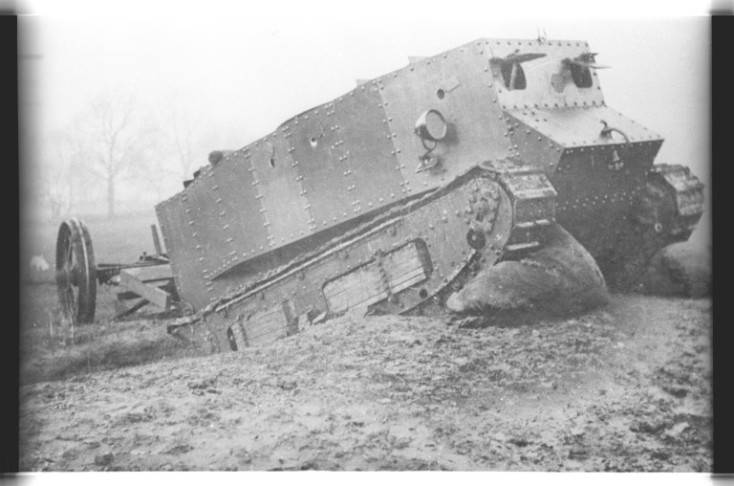
Go! It was smooth on paper, but forgot about the ravines!
Of course, both Tritton and Wilson, looking at their brainchild in metal, were very happy. However, they already knew that Little Willy would not be finalized. By the way, this name itself appeared because one of the employees decided that the car was similar (!) To its constructor Wilson, that's why they called it that. Well, this is purely British humor. Although, on the other hand, the very first Tritton and Wilson machine was generally called “No. 1. Lincoln ”(by the name of the city where the manufacturer was located). More importantly, both Tritton and Wilson started to work on the Mother tank somewhere in the middle of August, and by the beginning of December its wooden model was ready.
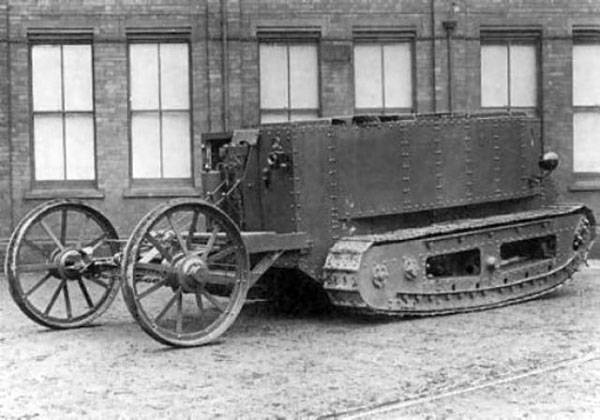
The wheels are just huge ...
That is, it was obvious that they turned out to be a “stillborn child”, but his tracks and tracks were quite functional. In tests, the tank moved awkwardly, which, however, was caused by the presence of a massive tail carriage with large diameter steering wheels. The driver using the cable system could deflect it to the sides, which led to the rotation of the tank. But the turning radius was, of course, very large. But the width of the moat that Little Willy could have overcome was estimated by the military as insufficient, as well as the height of the vertical obstacle that he could have.
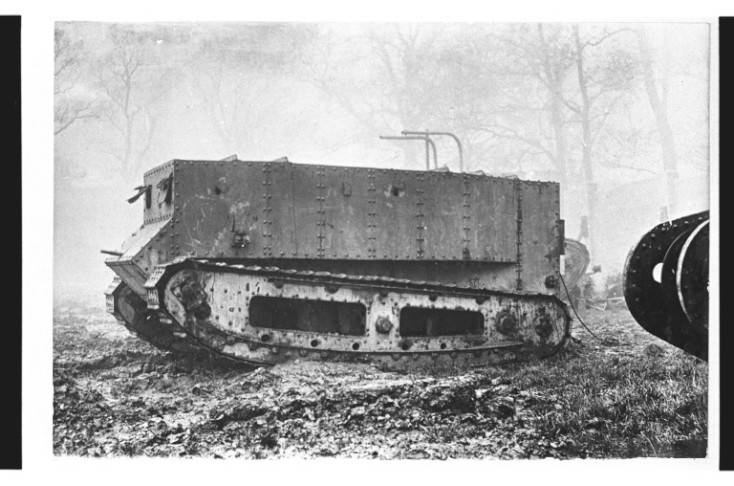
"Willy" on Dollys Hill
Interestingly, at first the tank had a very solid turret, quite suitable to put in it a 40-mm automatic gun. And such weapons were fully consistent with the project, according to which the "land ship" was supposed to have exactly the "pom-pom" installed in the tower. In the frontal armor plate there should have been a machine gun, and in the body - holes for firing from a personal weapons crew members. But while at Lincoln the tower model still stood, then at Little Willy it was no longer there, and all efforts were directed at improving the chassis.
Although it was the tower tank, armed with a quick-firing cannon, that was much closer to modern vehicles than the adopted British "rhomboids." In any case, the military lost interest in Little Willy, but they did not begin to disassemble it for metal. He ended up at Wembley Park in London, with no rear wheels. At the end of 1917, this park became a real cemetery of experienced British tanks. And here "Willy" stood for a year. He got to the future Royal Tank Museum in Bovington already in 1919 and was stored there until 1928, when King George V arrived in Bovington. He took pictures with this tank during a walk, which, however, did not affect his fate. The tank was overgrown with blackthorn and in this form was still about 20 years old. There are legends of the Second World War that “Little Willy” was used as an anti-landing pillbox by Bovington and that he was hidden because it was a national relic, and that he was transported to Gloucestershire, where he stood near the airfield as a pillbox. The main thing, however, is that the tank has been preserved and looks very good so far, although it is completely empty inside.
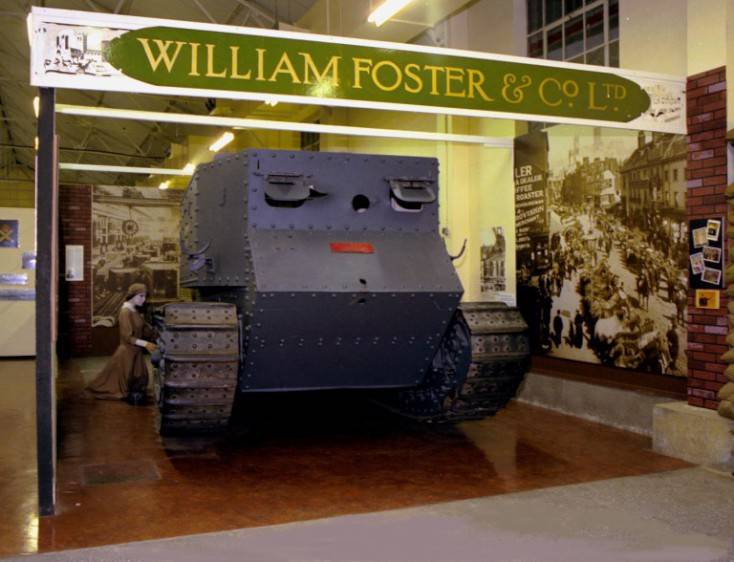
Tank in the museum, 1987
In 1980, it was repainted in a matte gray color, which, as the museum experts decided, is closer to its original color than “deep bronze green” (green with a bronze tint) - the traditional color of British tanks of World War II, which was painted at one time and this tank.
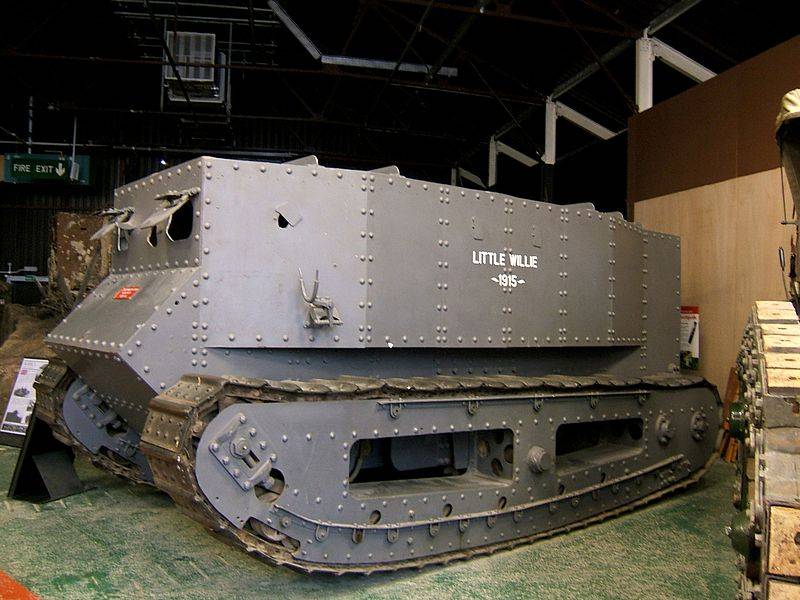
Repainted Willie
Now he stands in a place of honor in the museum hall, and each of his visitors can see where exactly the whole world tank building began.
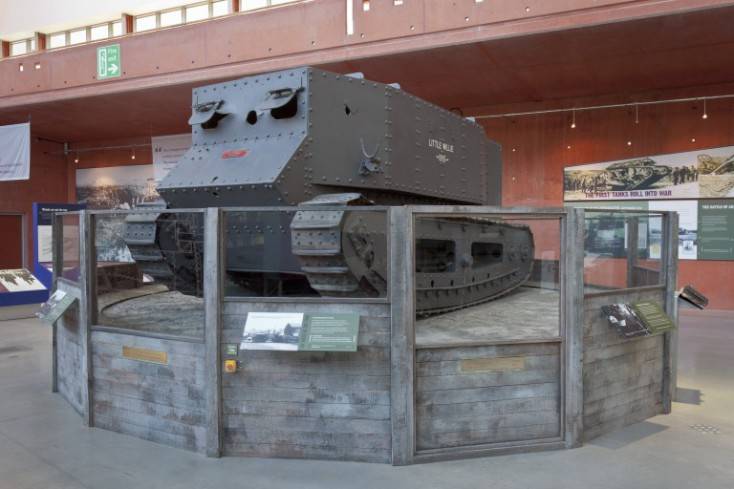
"Willie" in the museum, 2013
PS Interestingly, having tested the "Little Willy" as a running platform for a combat vehicle, the British did not even make an attempt to put at least some weapons on it. The layout of the tower with the pom-pom, of course, does not count. When the designers removed it, they closed the hole under the tower with an iron sheet with a small gap and thus arranged something like a flat-shaped ventilation fungus. True, nine rifle embrasures were provided by car, but nowhere is it said that “Little Willy” was fired at least once on the move.
Meanwhile, its construction made it possible to install two side sponsons on it and put either two machine guns or two 37 mm Hotchkiss guns in each. Although the designers initially did not like the cross-country ability of the car, why did they choose the option with a “rhombic chassis”, but even in this version the first British tank would not be inferior to the French CAI Schneider tank. Why was this not done and why the very first British tank was never tested by shooting? Today we can only guess on this subject ...
References
1. David Fletcher. British Mark I Tank 1916. (New Vanguard No. 100). Osprey Publishing, 2004.
2 David Fletcher The British Tanks 1915-19. Crowood Press, 2001.
3. Classic Military Vehicle magazine March 2012.
4. Shpakovsky V.O. Tanks are unique and paradoxical. M. - St. Petersburg: ACT; Landfill, 2007.
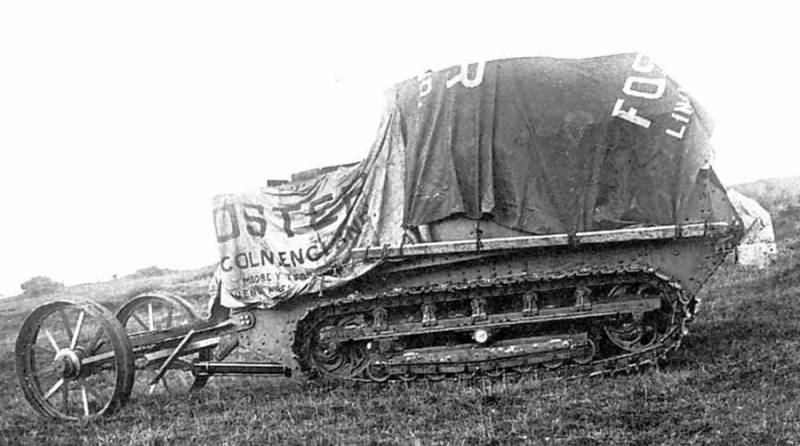
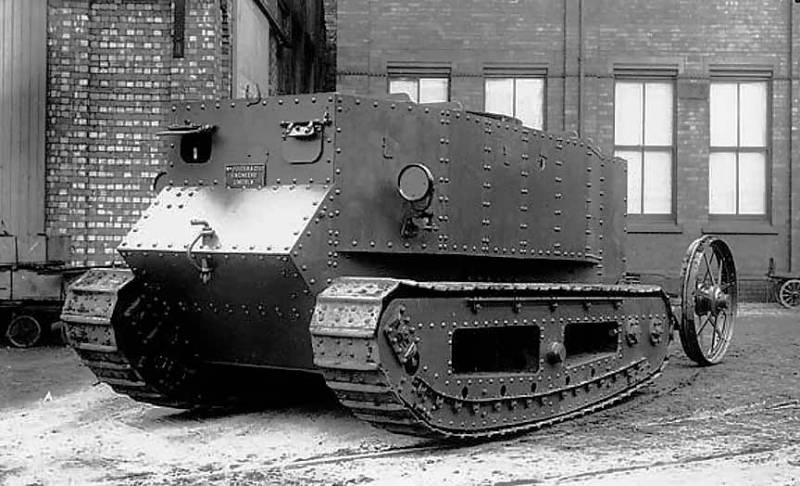
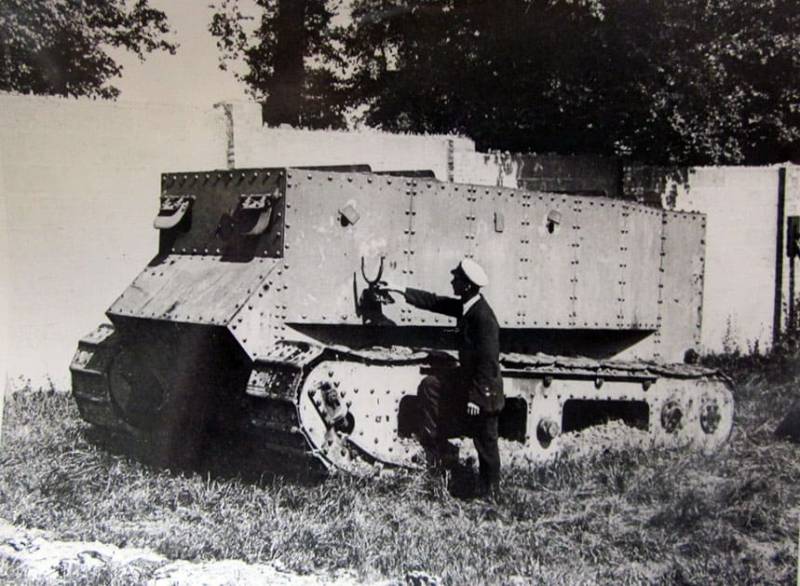
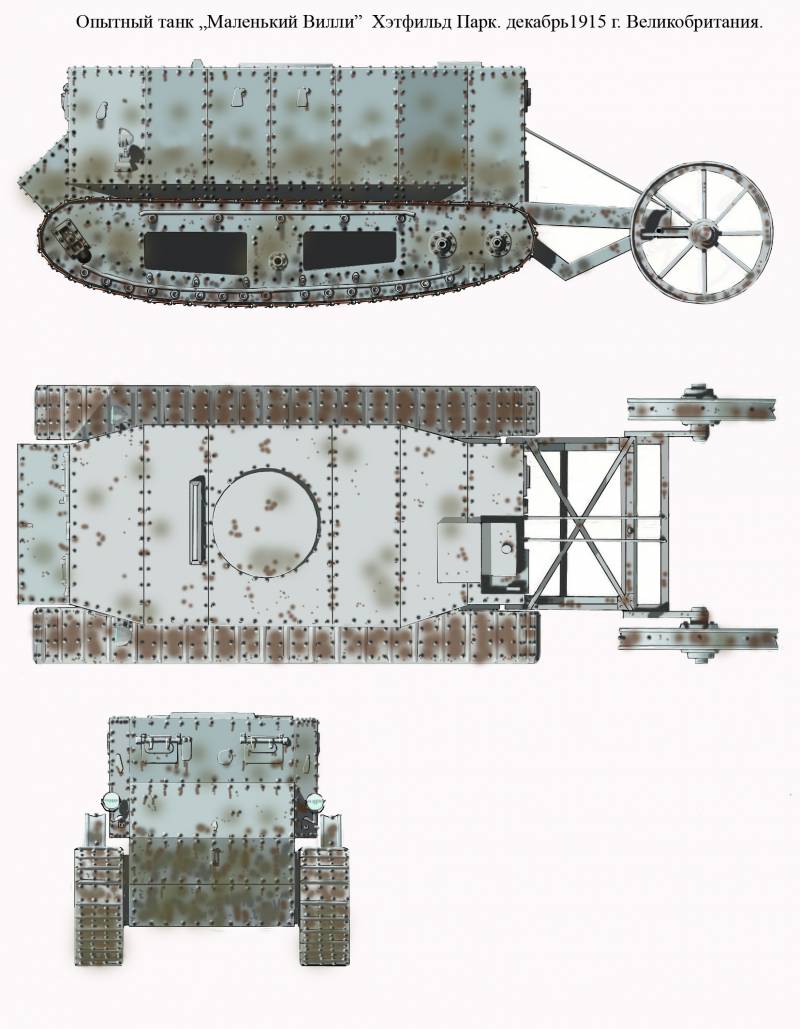
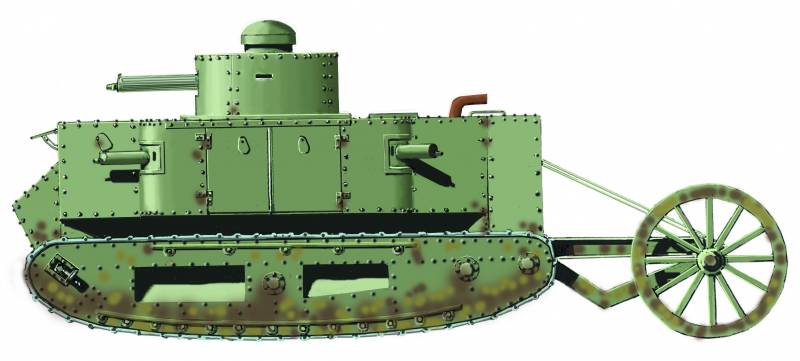
Information